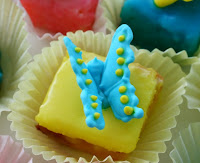If you were a nut allergic person, would you eat “peanuts” or not? According to their name, you definitely shouldn´t but, as every name you will find in this blog, it is misleading. Let´s know the reason for this identity crisis!
Peanuts take their name from their resemblance to peas in a pod. However, for a proper classification of this food, we must first know the differences between a legume and a nut. At first sight they are not very obvious, as both of them consist of a simple dry fruit carried inside a pod or shell, but looking carefully at the details, you can prove that these two groups have significant differences.

In the strict botanical use of the term, nuts usually have only one seed (on rare occasions two), whereas legumes frequently contain multiple seeds. For instance, it is not uncommon for a pea pod to contain half a dozen peas. In addition, nuts are always indehiscent, that is, they won´t open on their own. In contrast, the majority of legumes are dehiscent, meaning that they open naturally along a seam on two sides. Again, the pea pod is an obvious example of this. Another difference is that the seed of a nut is never attached to the ovary wall, while legumes often contain seeds attached to their pods. And finally, nuts grow on trees, that´s why they are sometimes referred to as “tree nuts”, whereas legumes grow on bushes or underground.
 Looking only at these common distinctions, it is still unclear whether a peanut is a legume or a nut, since it has characteristics of both legumes and nuts: it contains two seeds (as a legume), the pod is indehiscent (as a nut), the seed is not attached to the ovary wall (as a nut), and it grows underground (as a legume).
Looking only at these common distinctions, it is still unclear whether a peanut is a legume or a nut, since it has characteristics of both legumes and nuts: it contains two seeds (as a legume), the pod is indehiscent (as a nut), the seed is not attached to the ovary wall (as a nut), and it grows underground (as a legume).
However, if we take into account a nut in culinary terms, it is any large seed which is used in food and comes from a shell. This definition is not exact because this way, we are considering nuts many of the foods that aren´t technically nuts, such as drupes, almonds, cashews, corn nuts, pistachios, and, of course, the peanut.
So while their physical structure resembles more closely that of the legumes, their use in diets and cuisines resembles more closely that of the nuts. We could say then that the peanut is a unique member of whichever family it belongs to, and we cannot exclude it from belonging to either, though many scientists affirm that peanuts are in fact legumes, despite the word “nut” is in their name and they have some similarities with nuts, because if you are nut allergic you can eat peanuts, unless you are also allergic to them.
In conclusion, a pea is a legume, a nut is a nut, and the peanut's identity crisis is readily apparent in its name, so for everyday use it's probably easier just to go with the broad culinary definition of a nut and leave it like that!
Hope you enjoyed it!
PD: Here it´s the nut consumption chart, so you can see how important knowing all this is.




























